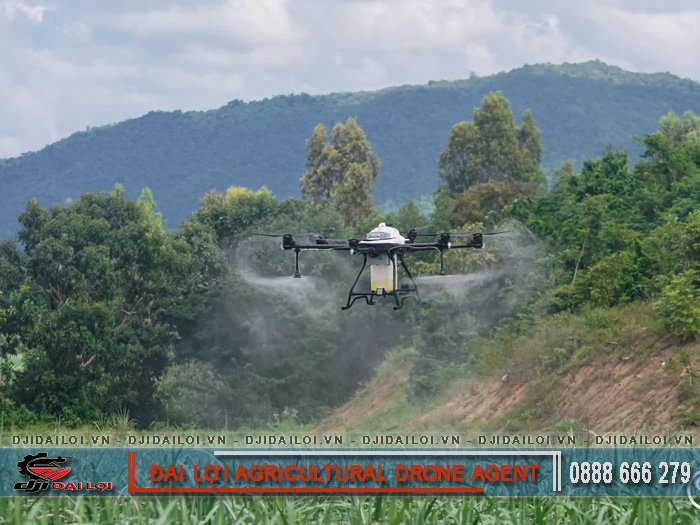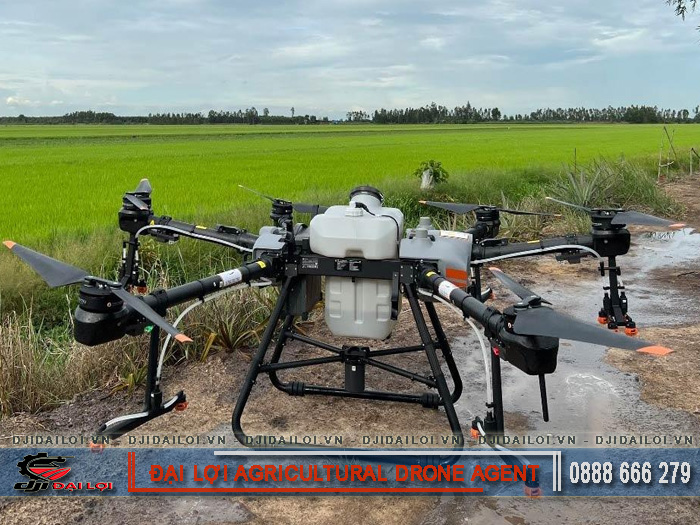
Over the past five years, Vietnam’s pesticide-spraying drone market has grown rapidly, driven by the trends of mechanization and digital transformation in farming. Companies like DJI, XAG, and local brands are continuously upgrading technologies such as AI precision spraying, RTK positioning, and automatic obstacle avoidance.
According to the 2025 report, the proportion of farming households using smart agricultural drones has tripled compared to 2020–2022. Not only does this reduce toxic exposure by 90%, but it also cuts pesticide use by 30%, significantly lowering operational costs.
Modern pesticide-spraying drones not only boost productivity but also meet the “efficient–safe–economical” criteria. Farmers can spray 20–30 hectares per day instead of just 2–3 hectares manually. Moreover, as drone prices become more competitive, cooperatives and individual farmers are increasingly investing in these devices.
Key benefits include:
Drone prices depend largely on the integrated technology and manufacturer. Models from DJI and XAG occupy the premium segment thanks to multi-directional radar, AI camera systems, and smart controllers.
Meanwhile, local brands are typically 30–40% cheaper but often lack software stability and durable materials. This price gap reflects the difference in quality and technical support after purchase.
Another key factor is tank capacity:
The larger the tank, the wider the spray coverage and the higher the investment. However, per-hectare spraying costs are lower for large models due to time and chemical savings.
Most pesticide-spraying drones come with 12–24 months of warranty. However, long-term maintenance costs play a bigger role in total ownership cost. Batteries, pumps, propellers, and radar sensors need replacement every 6–12 months.
A basic maintenance package for DJI models costs around 10–15 million VND per year, while entry-level models cost 5–7 million but are more prone to damage.
These lightweight drones are easy to control and ideal for small-scale farmers. Average prices range from 85–95 million VND, from Chinese and Vietnamese brands.
Notable models:
Despite lower prices, they work well for rice, corn, cassava, and other low crops.
The 20L models balance performance and cost, priced between 150–220 million VND, with 20–25 hectares sprayed per day. Compared to 10L models, productivity doubles while cost rises only 40–50%, making this the most popular option among cooperatives.
|
Criteria |
Vietnamese-made drones |
Chinese imported drones |
|---|---|---|
|
Average price |
90–180 million |
120–250 million |
|
Software stability |
Moderate |
Good |
|
After-sales service |
Easily accessible |
Depends on distributor |
|
Spare parts |
Readily available |
Hard to import if out of stock |
Users should balance drone price and long-term stability when deciding between domestic and imported models.
The DJI T20P costs about 230–270 million VND. It features a foldable design, powerful propellers, multi-directional obstacle sensors, and a 20L tank. Ideal for 20–50 hectare farms, it optimizes costs with dual-radar precision spraying and uniform flow control.
The flagship DJI T40 costs 320–370 million VND, equipped with dual centrifugal nozzles, AI field mapping, and new-generation brushless motors. It is rated as one of the most efficient pesticide-spraying UAVs, ideal for rice and industrial crops.
Released in 2025, the DJI T50 and T70P target farms over 100 hectares, priced from 190 million VND for the main body. The T70P features an Adaptive Spray Algorithm that adjusts spray volume based on canopy density - a major leap in precision agriculture.

At the same 30L capacity, the DJI T30 is about 25% more expensive than Chinese models but offers twice the battery life and software stability. Over three years, total costs are nearly equivalent since DJI units require fewer repairs. Thus, while initial prices are higher, DJI drones deliver 15–20% better long-term efficiency.
Survey in Dong Thap (2024):
This ~50% cost gap allows farmers to recoup investments in just 2–3 harvests.
This ensures optimal investment and spraying efficiency.
Batteries are the most expensive component, accounting for 25–30% of the drone’s cost, lasting 300–400 charge cycles. DJI batteries cost 20–30 million VND, while local ones cost 10–15 million but have shorter lifespans.
Average annual maintenance costs:
This includes replacing propellers, pumps, sensors, and electrical inspections.
Average spraying cost = (Total annual operating cost / Total sprayed area).
Using UAVs, costs drop to around 150,000 VND/ha - nearly 50% less than manual spraying, explaining their growing popularity in Vietnam.
Drone prices are expected to drop by 5–10% in 2025 as component costs fall and AI auto-spraying becomes locally integrated.
Vietnam’s 4.0 Smart Agriculture Program subsidizes 20–30% of UAV costs for cooperatives, helping lower prices and expand accessibility.
Provinces like Lam Dong and An Giang now offer 0% interest loans for purchasing DJI drones - making 2025 the ideal year for investment.
On average, a pesticide-spraying drone pays for itself in about two years, thanks to savings in labor, chemicals, and time.
For sustainable performance, users should conduct regular maintenance, use genuine batteries, and update flight software frequently.
In summary, understanding pesticide-spraying drone prices by segment allows investors to make informed decisions, avoid unnecessary costs, and maximize long-term economic benefits.
Yes. Operators must be trained and certified in agricultural UAV operation to ensure flight safety and compliance with aviation regulations.
Yes. Many authorized DJI dealers and distributors offer 0% installment plans for 6–12 months, especially for agricultural cooperatives.
Depending on farm size, most users recover costs after 2–3 crop seasons due to savings in labor and pesticide usage.
Only if it’s still under warranty and has clear technical certification. However, used drones often have degraded accuracy and battery life, so inspect carefully before purchasing.
Maintenance includes checking propellers, pumps, obstacle sensors, updating control software, and cleaning nozzles. Regular upkeep extends drone lifespan and protects your investment.